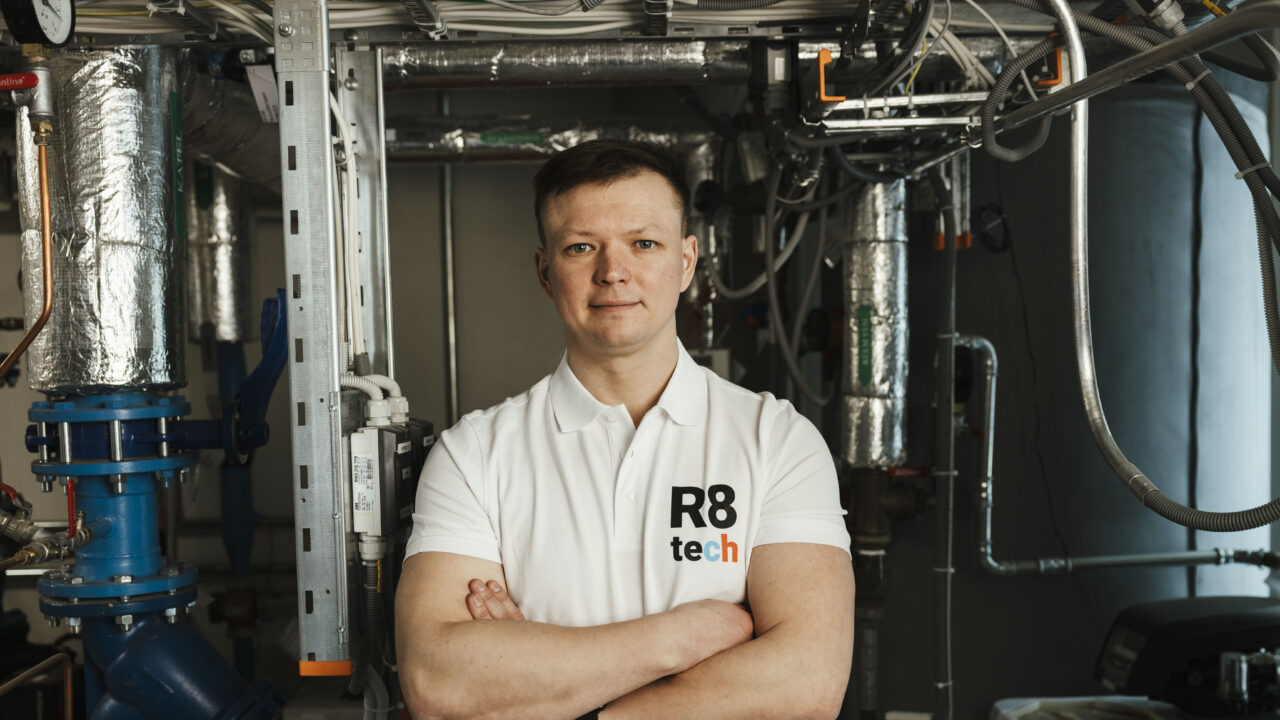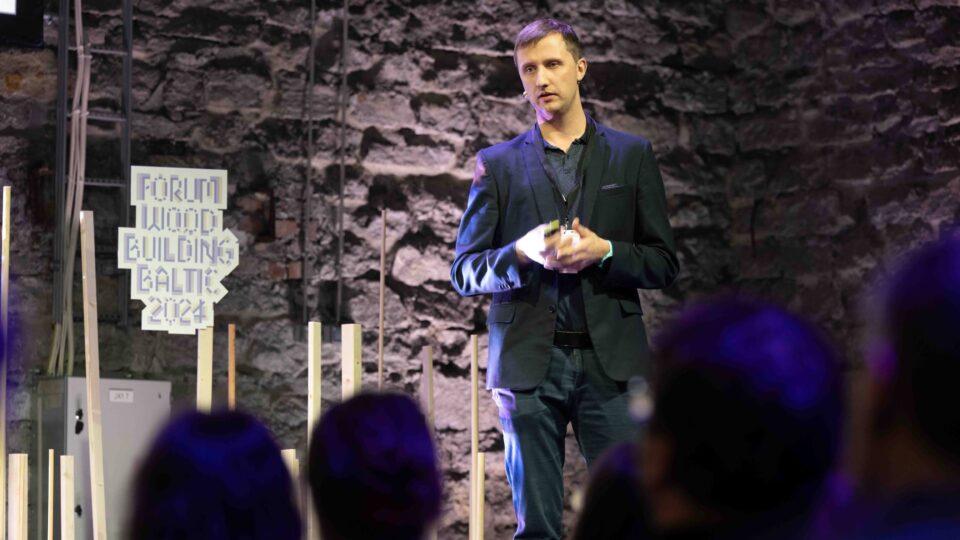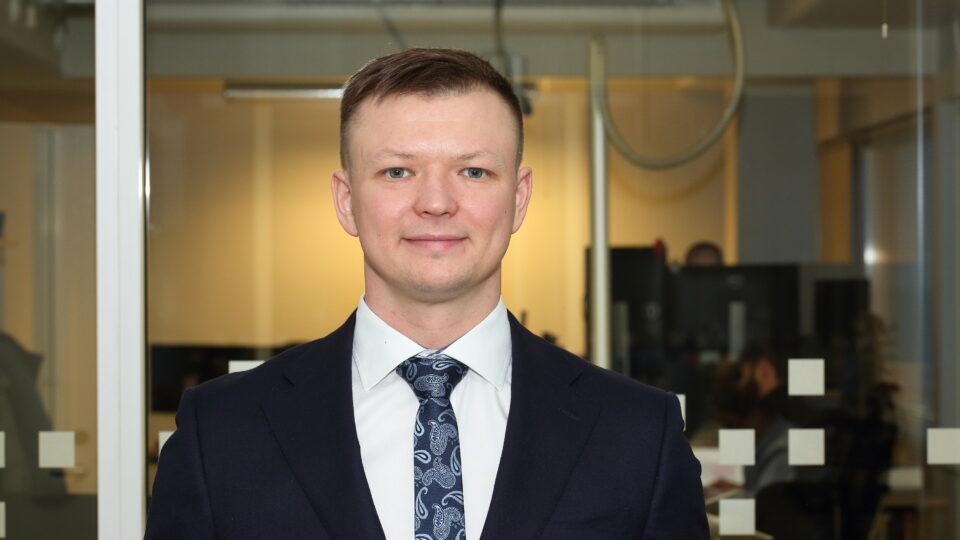When people think of artificial intelligence, they often picture ChatGPT or image generators. But Estonian company R8 Technologies has taken a different path. Their virtual assistant Jenny autonomously manages the indoor climate of office buildings around the clock – saving energy and preventing system failures in the process.
According to Siim Täkker, founder of R8 Technologies and an alumnus of TalTech, the solution is based on machine learning that adapts to a building’s behavior and the surrounding environment. Jenny continuously collects data from thousands of points – from temperature and humidity to electricity prices and human movement.
Täkker explained that the workload involved in managing building climates has exceeded human capabilities: “In the past, you’d look at a few dozen sensor points and decide what to change in the system. Now, the number of data points reaches into the hundreds of thousands. That’s where the real breakthrough lies – only artificial intelligence can handle such volume.”
“In the past, you’d look at a few dozen sensor points and decide what to change in the system. Now, the number of data points reaches into the hundreds of thousands. That’s where the real breakthrough lies – only artificial intelligence can handle such volume.”
A global technology born in Estonia
He admitted that R8 Technologies began developing AI for building management at a time when the industry wasn’t quite ready for it. For many, the idea of a virtual assistant seemed far-fetched, and the company often had to explain why such a solution was even needed.
Today, R8 Technologies operates in 23 countries, and its system has been translated into more than fifteen languages – a reflection of Estonia’s flexibility and adaptability despite its small size. Still, international expansion hasn’t come without challenges.
Täkker recalls that after Russia launched its full-scale war, working with partners outside Eastern Europe became more difficult. “I remember when the war started, we hit a kind of wall – an Estonian company, close to the border. People asked whether we could be trusted, whether we’d even still exist tomorrow,” he recalled.
He added that such moments require the ability to speak the local language and explain that Tallinn is a safe, modern, and rapidly developing city, where technologies used across Europe are born. “We also made technical upgrades, obtained various certifications, and set up a data center in Western Europe,” he added.
Knowing the local language also helps, especially when technical details need to be explained to earn clients’ and partners’ trust.

The artificial intelligence developed by R8 Technologies controls a smart building – data-driven management makes urban spaces more energy-efficient and transparent. Photo: OpenAI / ChatGPT
R8 Jenny – the colleague who never sleeps
The virtual assistant Jenny is more than just software – she’s like a member of the team. She understands the logic of the building, adapts to usage patterns, and can anticipate problems before they affect users. “The worst situations are when both heating and cooling are running in the same room at the same time, and ventilation adds to the chaos,” said Täkker, describing the kind of scenarios Jenny helps to prevent.
“The worst situations are when both heating and cooling are running in the same room at the same time, and ventilation adds to the chaos.”
The system takes into account dozens of variables: electricity prices, sunlight, weather conditions, the nature of workdays, past usage patterns, and much more. Decisions are made transparently and rationally – not at random.
According to Täkker, Jenny makes considered decisions based on knowledge of the building’s behavior and domain expertise – not on vague assumptions.
Human habits also play a significant role in indoor climate. Täkker notes that the problem often lies not in the technical systems but in the expectations of the room’s occupants. If someone wants to wear a T-shirt in the office during winter, the room temperature is set too high, leading to increased energy consumption. A smarter choice would be to wear a sweater and maintain a temperature of around 21–22 degrees Celsius, which is also in line with standards.
The system can take subjective preferences into account. If one team prefers cooler air and another prefers it warmer, Jenny adjusts accordingly. When the occupants change or the weather shifts, the operating mode changes as well. The system also detects if devices are out of sync and provides maintenance recommendations.

In today’s office, heating and cooling systems alone are no longer enough – a comfortable indoor climate is ensured by the virtual assistant Jenny, who takes into account sunlight, electricity prices, and employees’ habits. If both heating and cooling were to activate at the same time, Jenny intervenes before anyone even notices the discomfort. Photo: Pexels.
A look into the future: more transparency, more purpose
According to Täkker, Estonia is technologically strong, though not necessarily ahead of other countries. Our competitive edge lies more in flexibility and the ability to quickly test and implement science-based ideas in real business environments. In his view, it’s the practical collaboration between researchers and entrepreneurs that enables Estonia to develop solutions that don’t remain theoretical but make it to real life and the market.
That’s why R8 Technologies works closely with TalTech. Joint projects involve, for instance, evaluating the efficiency of ventilation systems or optimizing fan operations. Many PhD and master’s students who started with research projects have later joined the company as full-time employees. Täkker highlights TalTech senior researcher Tuule Mall Parts as one example – she received the Young Engineer Award from President Karis and now contributes directly to R8’s development.
Täkker sees the future direction as multi-layered. On the one hand, building management is clearly moving toward greater integration of data systems – different data sources that currently operate in parallel or with partial overlap will increasingly interact and complement one another.
On the other hand, it is becoming crucial that all automated decisions are understandable to both technical staff and everyday building users. “If the system makes a decision but no one understands why that decision was made, then trust cannot develop,” said Täkker. That’s why it’s not enough for AI to efficiently manage a building – its actions must also be explainable.
“If the system makes a decision but no one understands why that decision was made, then trust cannot develop.”
In a broader perspective, Täkker sees AI moving increasingly toward hybrid solutions, where automation and human oversight don’t exclude but rather support one another. AI doesn’t need to replace humans – it should relieve them of routine burdens and allow them to focus on tasks that require human judgment, ethical consideration, or strategic thinking.
Täkker also believes that AI’s role goes beyond optimization and control – its ability to support decision-making in complex and rapidly changing environments is becoming more important. For example, in the face of energy price volatility or disruptions in supply chains, smart systems capable of rapid adaptation will, in his view, shape the future of building management – and even urban planning at large.
**
R8 Technologies received recognition at Trialoog’s first anniversary event in the category “Role Model of the Year” – an award highlighting outstanding examples of scientific collaboration and the promotion of science-based entrepreneurship.




